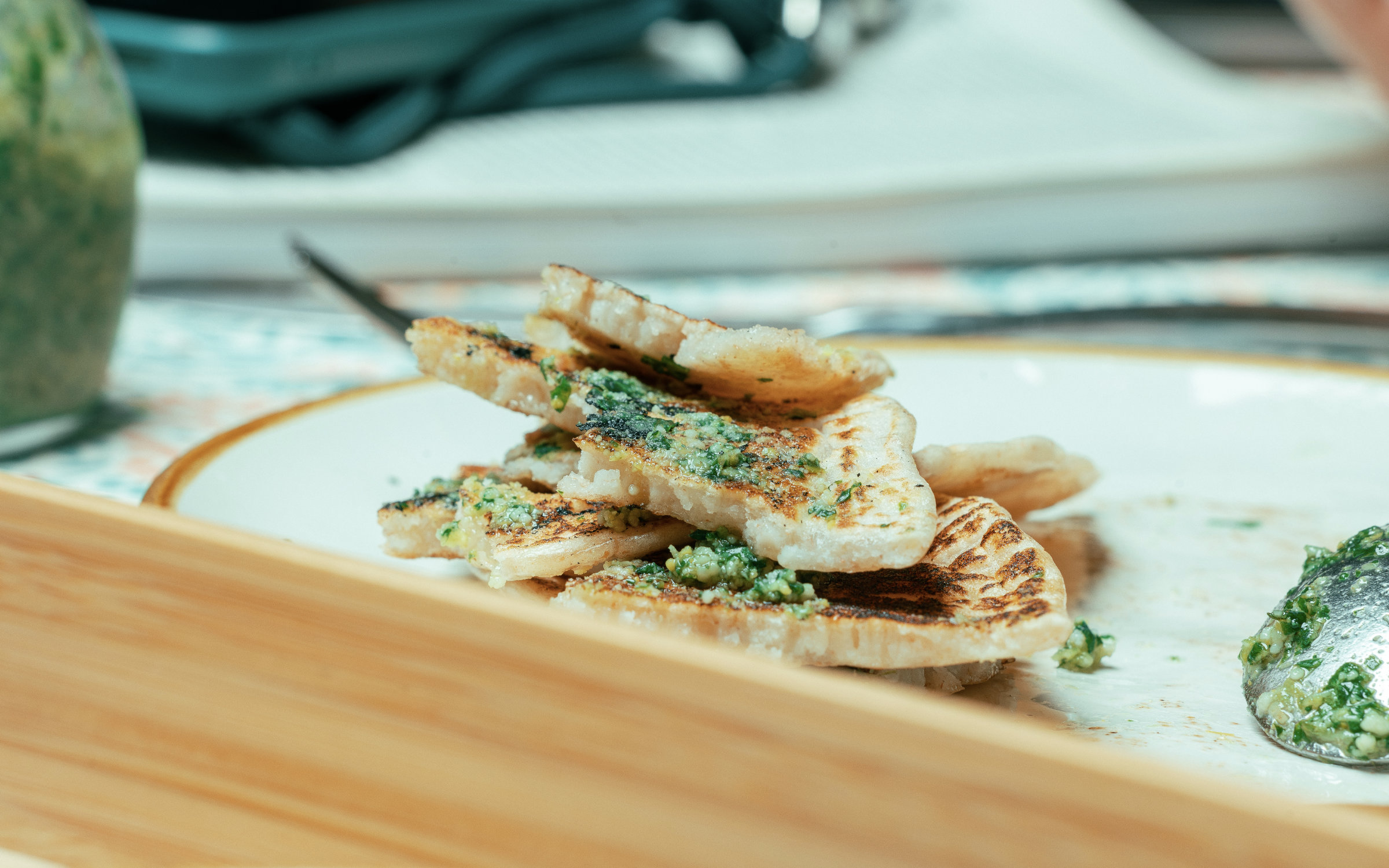The New Gastronome
Panigaccio di Podenzana
A Culinary Gem Hidden in the Crossroads of Italian Regions
by Irene Giussani
by Irene Giussani

Are you looking for a dish to transport you to a little-known corner of the culinary world? Look no further than the Panigaccio di Podenzana, a rustic flatbread steeped in history and tradition. Nestled in the picturesque village of Podenzana, in the Tuscany region of Italy, lies this hidden gem of the culinary world.
Located in the heart of the Lunigiana area in northern Tuscany, Italy, is a rustic and picturesque village called Podenzana. This region is known for its rolling hills, dense forests, and fertile valleys; its cuisine emphasizes the use of wholesome ingredients. In addition to being a delicious and iconic food, Panigaccio di Podenzana represents a way of life that values simplicity, community, and a strong connection to the environment, deeply rooted in the local culture and tradition. This humble yet appetizing dish has been a staple for generations, with a long and fascinating history that will tantalize your curiosity and taste buds.
Together, we will explore the origins and significance of this local specialty, as well as the unique ingredients, equipment, and territory that make it so special.

The history of this traditional dish from the Lunigiana region of Italy dates back to the 13th century. Legend has it that they were created by a group of local women who came together to produce food to sustain their families during the hot summer months. Using the ingredients they had on hand, they would bake these flatbreads on hot stones outside their homes. This dish quickly gained popularity and soon spread throughout the region. Today, the Panigacci di Podenzana is still a beloved and iconic dish of the area, a symbol of the region’s culinary heritage, and a testament to the power of community.
Its tradition is kept alive and thriving by local producers, who keep using traditional methods and recipes to create this delicious food. While the recipe is simple, this bread has such a unique flavor and way of being prepared that it’s worth exploring.
A. D V. E. R. T. I. S. I. N. G
The delectable nature of this dish is not solely attributed to its recipe but also to the artistry applied in its preparation. The base is, in fact, really simple, made from a mixture of flour, water, and salt. But then, what makes it so outstanding?
The uniqueness of this dough lies in its cooking method, which involves the use of a distinctive piece of equipment called testo. It consists of a large, flat griddle made of terracotta, a type of clay that has been used for centuries in Italy for making pottery and other objects. The testo is typically around 40 cm in diameter and has a slightly concave shape, with a raised lip around the edge to prevent the batter from spilling over.
The bread is finally served with pesto, vegetables, a variety of cured meats, cheeses (and even Nutella if it’s for dessert!), creating a flavorful and hearty meal that is perfect for any occasion and that reflects the region’s strong connection to its land.
Terracotta testi have been used for centuries in the regions of Tuscany, Liguria, and Emilia-Romagna to cook flatbreads and other traditional dishes. These vessels were originally made by local artisans using clay from the surrounding mountains, and each one was unique, with slight variations in size, shape, and thickness. In their simplicity, testi represent a piece of perfectly sustainable and durable equipment: they are made from natural materials, biodegradable, energy-efficient to produce, and long-lasting.
In addition to their practical use in cooking, these tools also had cultural and symbolic significance. They were often given as wedding gifts and were seen as a symbol of the new couple’s shared future and ability to work together to create a happy home. Today, the use of terracotta testi is still an important part of the culinary heritage of Tuscany and other regions of Italy. Many Italian families still have their own, passed down from generation to generation, and are used for cooking unique dishes for holidays and other celebrations.
If you’re looking for a taste of tradition and values, make sure to add Panigacci di Podenzana to your list of must-try dishes. With its simple, wholesome ingredients and deep connection to the local territory, this delicious flatbread is sure to satisfy both your stomach and your soul. It will transport you to the heart of Tuscany and leave you with a deep appreciation for the power of food to connect us to our past, community, and land.
While the traditional way to make Panigaccio di Podenzana requires the use of testi, you can still make them at home simply using a non-stick pan. So, if you want to prepare this succulent yet so easy dish, here’s the recipe to make your own Panigacci:

Ingredients:
Instructions:
The traditional way of consuming Panigacci is to eat them while still warm, folded in half like a sandwich, and filled with cured meats and fresh cheeses (strictly using your hands!). Alternatively, you can enjoy them boiled and seasoned with a delicious basil pesto, a porcini mushroom sauce, or simply with extra-virgin olive oil and Parmigiano Reggiano. Last but not least, Panigacci are also great as a dessert, filled with chocolate spread or jam to your liking.
The opinions expressed in the articles of this magazine do not necessarily represent the views of
The New Gastronome and The University of Gastronomic Sciences of Pollenzo.
Photos ©Aarón Gómez Figueroa & Irene Giussani